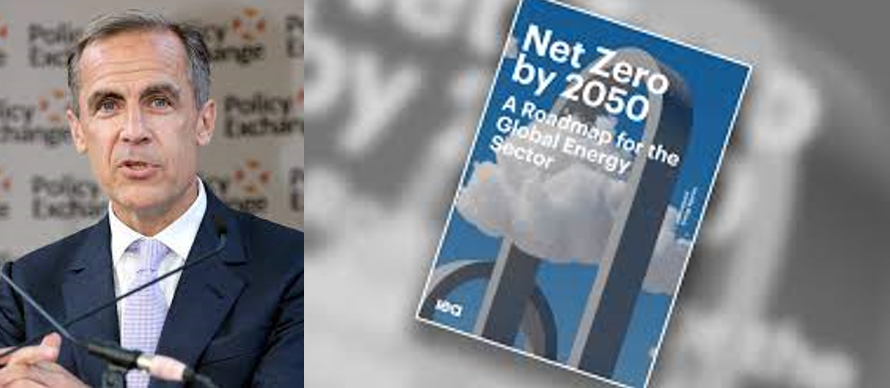Private Equity’s Unique Opportunity
Private equity investments derive returns by targeting change. Private equity investors search for opportunities to create value by injecting capital and new management strategies. Successful private equity firms identify companies with unrealized potential and realize a targeted return on investment.
The potential profitability of climate-centered sustainable governance is becoming increasingly clear. A paradigm shift is underway, as global demand for fossil fuels is already plateauing. Canadian fossil fuels are especially vulnerable to a downturn. Global transition investments are seeing growth year-over-year, while capital expenditures for fossil fuel development are facing stagnation.
This juncture presents private equity with a unique chance to capture value while also bolstering the global shift towards sustainable energy practices. Private equity investments are characterized by longer holding periods than traditional asset managers, usually accompanied by operational control. This longer-term perspective, relatively shielded from the scrutiny of quarterly earnings calls, allows for patience, pivoting as needed, and a focus on operational improvements, enabling sustainability to be a prime driver of value in private equity investments. At least in theory.
Some key actors have vocalized this opportunity. The former Governor of the Bank of Canada and current chair of Brookfield Asset Management, Mark Carney, introduced the notion of “go(ing) where the emissions are.” Where fossil fuel assets are at high risk of impending obsolescence, there exists an opportunity to redirect capital expenditure in high-emissions industries towards transition opportunities. The American Investment Council, the lobbying firm representing American private equity, noted similar potential in driving “brown-to-green” initiatives.
Simultaneously, private equity firms have greater flexibility to invest in emerging energy markets. Fast-moving capital from private equity, particularly in jurisdictions with governmental incentives to provide renewable energy capacity, can offer return on investments while supporting decarbonization. This has, to some degree, been seen in the form of perpetually growing private equity investments into renewables.
Private Equity’s Ongoing Inaction
Yet, for all this opportunity, to date private equity remains heavily exposed to fossil fuels. Private Equity Climate Risks’ 2022 report identified tens of billions of dollars in fossil fuel exposure across just eight private equity firms, holding energy portfolios with fossil fuel weightings as high as 97%. Only one of the eight had even a partial portfolio-wide transition plan. Fossil fuel exposure is increasingly risky, and a failure to implement transition plans across investments represents a failure to adapt to changing energy demand and growing regulatory risk.
This underscores perhaps the biggest critique of private equity on climate. That is, private equity can pick up high-emissions assets that other asset managers may be choosing to divest from. As publicly traded companies aim to shed their fossil fuel assets, private equity is scooping up the growing abundance of private oil & gas.
Dealing in private enterprises, and with less exposure to public-facing institutions, a lower degree of scrutiny has allowed private equity to invest without needing to justify its environmental impact. While private equity investments into renewables are growing at a faster rate than investments into fossil fuels, renewables only made up 12% of the $1.1 trillion in private equity investments into energy assets between 2010 and 2021.
Where firms like Brookfield tout the capital raised in their transition funds, they quietly hold legacy fossil fuel assets across the fossil fuel value chain, most of which remain without clear paths to transition. High profile announcements of renewable investments can obscure energy portfolios made up predominantly of fossil fuels. Where a firm like KKR may tout an investment into NextEra Energy, its impact is eclipsed by simultaneous investments into the Coastal GasLink and Pembina pipelines.
While select fossil fuel companies can be slated for transition – e.g. Brookfield’s venture into the coal-powered Origin Energy – there remains the risk of transition becoming unviable for individual assets. This is especially pronounced in new thermal coal acquisitions given the environmental impact of continued coal dependance. Brookfield has experienced the tumult of coal in its venture into the Dalrymple Bay coal terminal. Investing in dirty assets, especially coal, must be accompanied by a clear net zero pathway. Otherwise, cases of transition failure are simply adding capital into the fossil fuel industry, and increasing the fossil fuel weighting of already carbon-intensive private equity energy portfolios.
What’s Next?
A more climate-centered approach would see private equity not only reducing its footprint, but offering a significant piece of the necessary capital for an expedient energy transition.
Investors for Paris Compliance has begun working on our first deep dive into the Canadian private equity space. While not exclusively a private equity firm, Brookfield Corporation is undoubtedly a leader in Canadian finance with $850 billion in AUM, and has considerable private equity investments. Brookfield has also made some of the loudest climate claims, and aims to be a leader in Canadian sustainable finance. It has made a net zero by 2050 commitment, and has promoted its Brookfield Global Transition Fund. As such, Brookfield will be the focus into our inaugural analysis on the climate practices of Canadian private equity. Expect a deep-dive analysis of Brookfield’s climate impact in the coming months.



